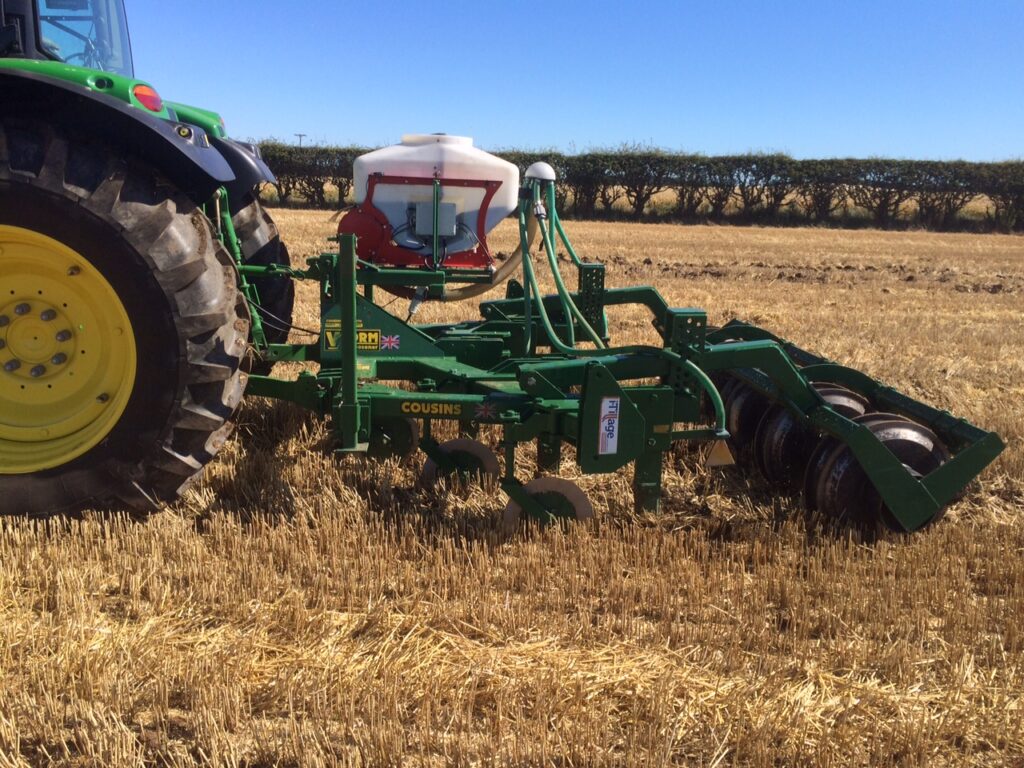Wait for moisture to drill OSR
10th August 2022
As harvest progresses almost a week earlier than normal and land is cleared, many growers will be looking to get their OSR crops into the ground – but don’t be tempted to drill until there is enough moisture, says Liam Wilkinson, arable development officer for Limagrain UK.
The dry summer has meant that crops have ripened early, but it also means that there is very little moisture in the soils, he says.
“Whilst some areas have seen some rain recently – many have not had any – and even where it has rained, it needs to be a serious amount to restore moisture levels to where they need to be to sustain a rapidly emerging rape crop,” he points out.
With not much rain in the early August forecast, many will be worrying about compromising establishment by holding off drilling until conditions improve.
Holding off doesn’t compromise yield, he notes. Mr Wilkinson’s advice is to look at and be guided by seedbed conditions rather than calendar dates.
“It is possible to get good yields from later drilled rape, when sown into the right conditions. In fact, they often outperform some of the earlier drilled crops – and many later drilled crops have been winners in the YEN awards!” he says.
“Last year we saw crops of LG Antigua drilled mid-September up in the Lincolnshire Wolds achieve yields of over 6t/ha, so there is definitely high yield potential for crops drilled into September in the right conditions.”
“Choosing the correct variety for this drilling window is key to success. If you are drilling in September, the focus should be on speed of autumn growth and vigour, so hybrids are a first choice because they are quick to get going and they accumulate biomass very quickly,” he says.
“Vigour is also important to get the crop established and putting roots down, but the speed of development for reaching over wintering biomass as quickly as possible is key.”
A variety in this situation will also benefit from a canopy in order to withstand potential pest problems, as well as harsh winter conditions.”
“Tried and tested varieties such as Aurelia and Ambassador have performed consistently in this slot, both on farm and in trial for a number of years now.”
“More recent additions of LG Aviron, LG Auckland and LG Antigua to the AHDB Recommended List strengthens the variety options available to growers, when drilling later than planned.”
Seed rate
With vigorous varieties, seed rates should target 25–30 plants/m2, which is normally around 50 seeds/m2, and Mr Wilkinson recommends that growers assess seedbed conditions and adjust seed rates accordingly to account for field losses, particularly if conditions deteriorate.
Useful insight
Limagrain’s 2021 OSR Establishment Scheme provided extremely useful insight into when crops are drilled, which was then tracked against weather at the time.
When plotted against the weather, the data showed that where drilling was carried out in dry conditions, subsequent crop loss was closely correlated.
However where there was rainfall on or around the two weeks from drilling, plant survival was much more likely.
“This data reinforces the need for moisture when drilling oilseed rape for successful establishment, as this allows the crop to germinate and grow up and away from CSFB as quickly as possible,” he adds.
Why moisture is so fundamental
Hutchinsons’ technical manager, Neil Watson, shares his views on why moisture is so fundamental in the germination process of OSR.
The OSR seed goes through a two-stage process before emerging; the first relies on it taking up 40% of its own weight in moisture before it can begin germinating. It then goes into a second stage of repair and stabilisation, which requires more moisture to complete germination.
How often have we seen seed that has started to germinate but then withers away through lack of soil moisture, before completing emergence? So sufficient moisture is needed in the soil to start the process and then more rain following drilling, to ensure there is sufficient moisture for the crop to emerge.

